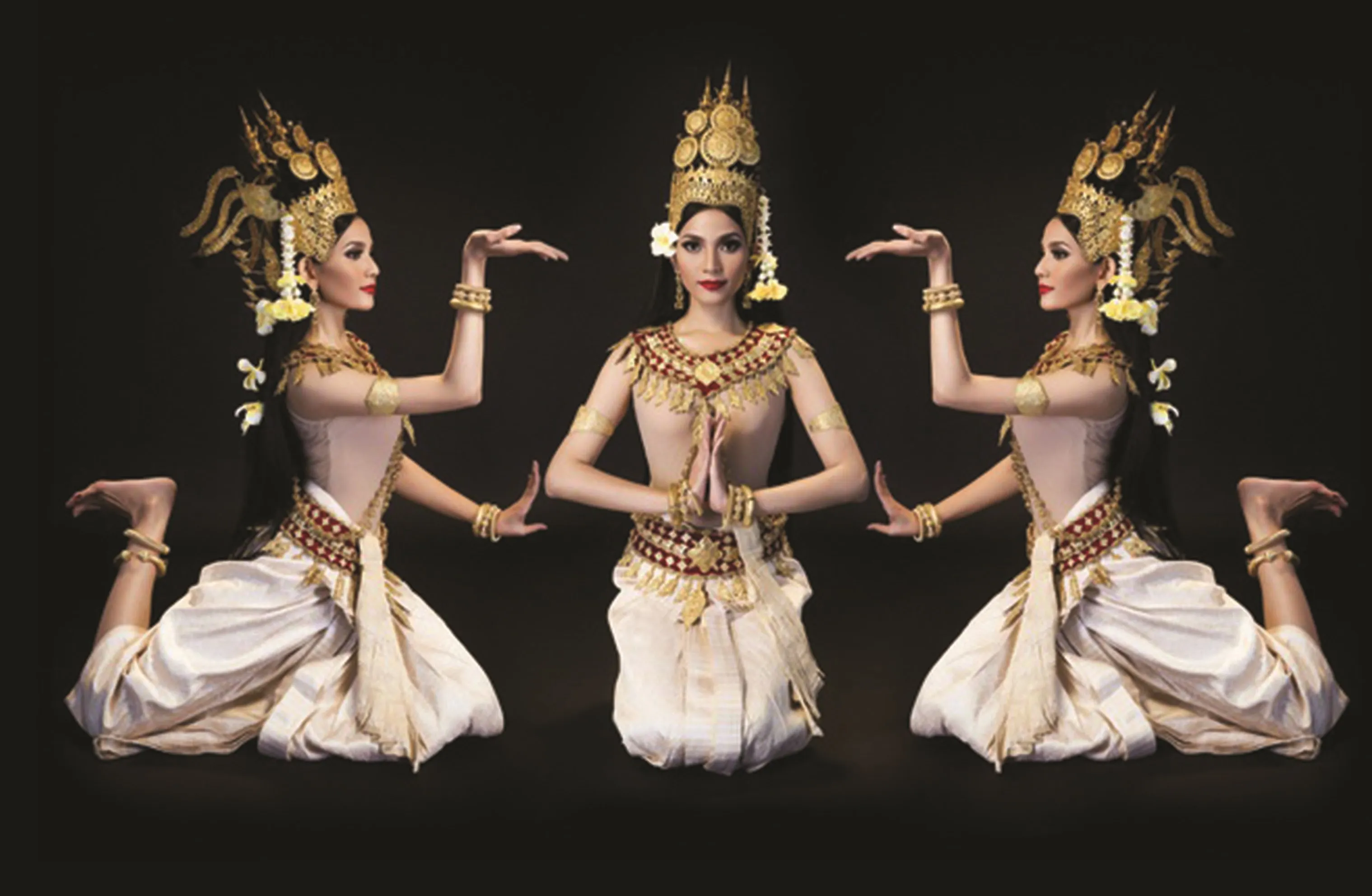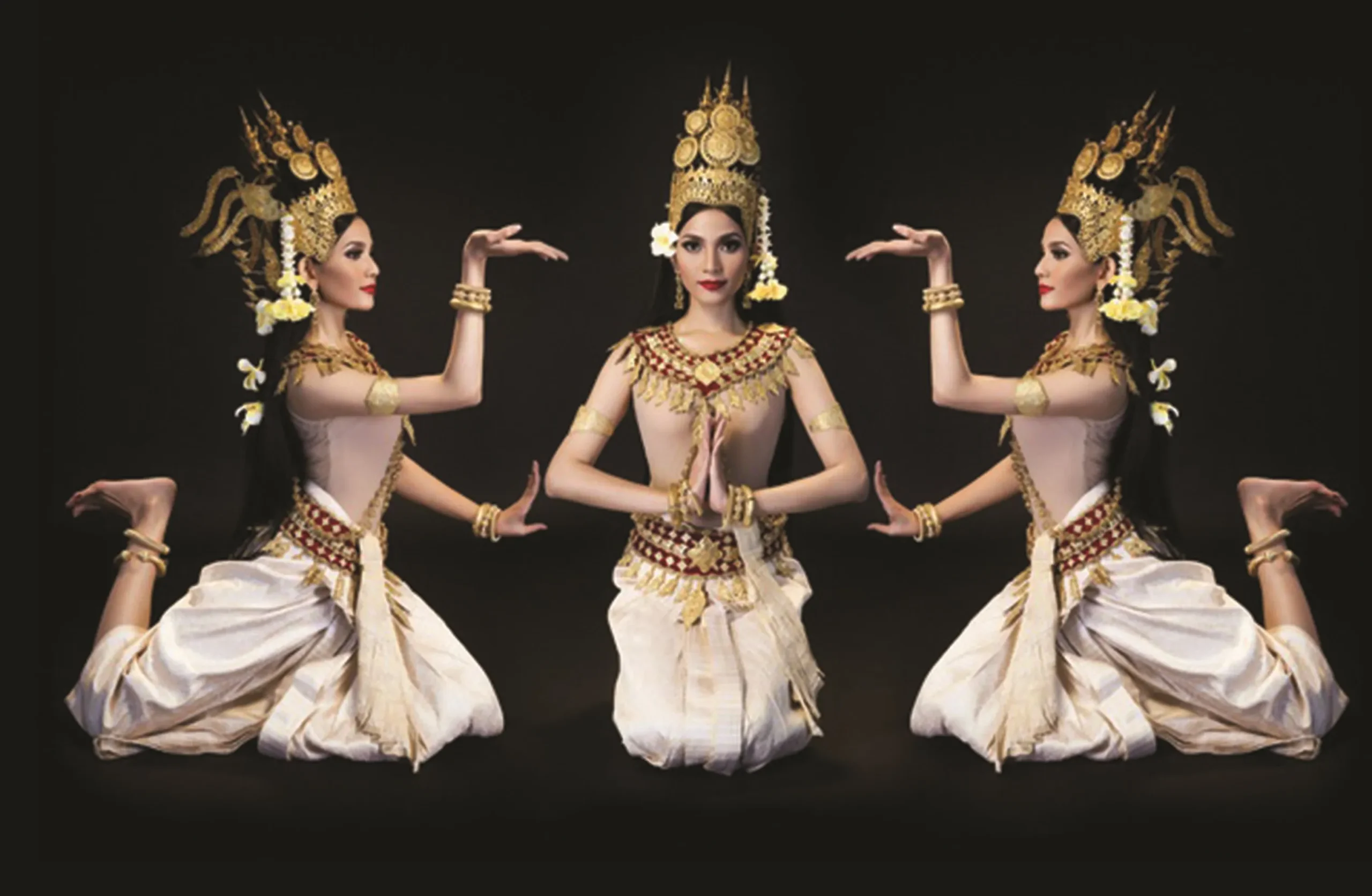The Mekong Delta, a fertile land nourished by the gentle Mekong River, is not only famous for its lush orchards and bustling floating markets but also a place where many unique cultures converge and blend. Among them, Khmer culture, with its long history and distinctive identity, has become an indispensable part, adding to the diverse and rich beauty of the Mekong Delta’s cultural tapestry. A journey to explore Khmer culture in the Mekong Delta will take you to ancient and majestic pagodas, vibrant festivals, graceful dances, and flavorful cuisine, unveiling a colorful and captivating cultural world.
Beliefs and Spirituality: Theravada Buddhism and Khmer Pagoda Architecture
Theravada Buddhism holds an extremely important position in the spiritual life of the Khmer people in the Mekong Delta, deeply ingrained in their consciousness and influencing all aspects of cultural and social life. Most Khmer people are devout Buddhists, and Khmer pagodas are not only places of worship but also cultural and educational centers, where community activities take place and precious traditional cultural values are preserved.
Khmer pagoda architecture is an artistic masterpiece, clearly reflecting the unique cultural identity. Each pagoda is a harmonious and sophisticated architectural complex with curved roofs, magnificent gilded and painted motifs, and a rich system of deities. Stepping into the pagoda grounds, you will be overwhelmed by the majestic beauty of the main hall, where Buddha Shakyamuni is worshiped, along with deities such as the four-faced god Kabil Maha Prum, the earth goddess Neang Thorani, the demon Rahu, the Apsara celestial dancers, the Krud bird-man, and Hanuman, the brave monkey king in the Ramayana epic. Every architectural detail, every statue carries a profound symbolic meaning, reflecting the worldview and humanistic views of the Khmer people.
Khmer pagodas are not only sacred spaces but also schools, where monks teach the Khmer script, Buddhist scriptures, and traditional moral and cultural values to younger generations. Buddhist festivals and ceremonies are also regularly held at pagodas, attracting large numbers of Buddhists and tourists from all over to participate, creating a solemn, bustling atmosphere rich in cultural identity.
Festivals and Customs: The Beauty of Khmer Culture
Khmer culture in the Mekong Delta is highlighted by a system of traditional festivals and customs that are extremely diverse and unique, reflecting the spiritual life, beliefs, and beautiful cultural values of the community. Khmer festivals are often associated with rice farming, Buddhism, and folk beliefs, showing the harmony between humans and nature, between material and spiritual life.
Chôl Chnăm Thmây, also known as the New Year festival, is the largest and most important festival of the year for the Khmer people, taking place in April of the solar calendar. This is an opportunity for everyone to have fun, gather with family, and wish for a peaceful new year and bountiful harvests. During the Tet days, cultural and artistic activities take place sôi nổi such as singing and dancing, folk games, and water splashing for good luck, creating a bustling and joyful atmosphere throughout the villages.
In addition to Chôl Chnăm Thmây, the Khmer people also have many other traditional festivals such as Buddha’s Birthday, Vu Lan festival (Ghost Festival), Kathina robe offering ceremony, Ooc Om Bok festival (Moon Offering Festival), Sen Đolta festival (ancestor worship ceremony), and dozens of other small festivals originating from folk beliefs and Buddhism. Each festival carries its own meaning and cultural value, contributing to enriching and diversifying the Khmer cultural picture in the Mekong Delta.
The life cycle customs of the Khmer people are also imbued with traditional culture, from weddings, birthdays, full-month celebrations, to funerals. These rituals are often organized solemnly and elaborately, showing respect for family, lineage, and community values. Besides, the Khmer people also preserve many other good customs and habits such as ancestor worship, worshiping deities, helping each other in the community, creating a united, close-knit, and compassionate society.
Traditional Arts: Music, Dance, and Costumes
Khmer traditional art in the Mekong Delta is a priceless cultural heritage treasure, reflecting the creative talent and artistic soul of the local people. Khmer traditional music, dance, and costumes are unique, distinctive, and full of charm.
Khmer music is characterized by the five-tone orchestra, using traditional musical instruments such as the Tro Khmer (spike fiddle), Goeu (Khmer lute), Tro Khmer kse diev (single-stringed fiddle), flute, drum, cymbals… Five-tone music is often used in festivals, religious ceremonies, weddings, funerals, and other community cultural activities. In addition, the Khmer people also have many other types of folk music such as Aday singing, Chhay Dăm, lullabies, Rôbăm storytelling, Dù Kê opera…
Apsara dance is one of the intangible cultural heritages of humanity, a unique artistic symbol of Khmer culture. The Apsara dance is graceful and soft, expressing the elegant and charming beauty of Khmer women. Besides Apsara dance, the Khmer people also have many other folk dances such as Rom Vong, Lam Leo, Saravan, which are often performed during festivals and entertainment occasions.
Khmer traditional costumes also contribute to creating a unique cultural identity. Khmer women often wear “Sampot” skirts combined with blouses or long-sleeved shirts, while men wear “Sarong” or Ba Ba shirts and trousers. Khmer traditional costumes are often made of silk or brocade, with bright colors and delicate patterns, showing the elegance, nobility, and charming beauty of the wearer.

Mekong Delta Khmer Cuisine: Unique and Refined Flavors
Khmer cuisine in the Mekong Delta is an indispensable part of the colorful cultural picture, bearing distinctive, unique, and refined flavors, reflecting the intersection between Khmer and Vietnamese, Chinese cultures. Khmer dishes often use fresh ingredients from rivers and fields, combined with distinctive spices such as Prohok (fermented fish paste), lemongrass, turmeric, galangal, creating a rich and unforgettable flavor.
Some famous dishes of the Khmer people in the Mekong Delta include Bún Nước Lèo (noodle soup), the most typical and popular dish, with a rich flavor of Prohok, snakehead fish, shrimp, roasted pork, and raw vegetables. Lẩu Mắm (fermented fish hotpot) is also an attractive specialty, with a rich and fragrant broth, served with many kinds of vegetables, fish, and meat. Grilled Ô Thum Chicken is a rustic but unique dish, chicken grilled in bamboo tubes, retaining its natural sweetness and the aroma of bamboo.
In addition, Khmer cuisine also has many other delicious dishes such as chicken curry, grilled snakehead fish, chicken salad, grilled spring rolls, tube cake, banana sweet soup… Each dish has its own flavor, showing the creativity and ingenuity of the Khmer people in culinary processing. Enjoying Khmer cuisine is not only a taste experience but also an opportunity to explore and learn more about the culture and customs of the local people.
Preserving and Promoting Khmer Culture in Modern Society
In the flow of integration and development of modern society, Khmer culture in the Mekong Delta is also facing many challenges and changes. The influx of foreign culture, changes in lifestyles and perceptions of young people, along with the impacts of the market economy, have significantly affected the preservation and promotion of traditional Khmer cultural values.
However, government authorities, cultural organizations, and the Khmer community in the Mekong Delta have been making efforts to implement many solutions to preserve and promote Khmer culture. Propaganda and education activities to raise awareness about the value of traditional culture are being promoted, especially among the younger generation. Khmer language classes, traditional craft classes, and cultural and artistic clubs are being expanded, creating conditions for people, especially young people, to access and learn Khmer culture.
The connection between cultural preservation and socio-economic development is also emphasized, through the development of community-based cultural tourism, promotion of traditional handicrafts, Khmer cuisine, creating livelihoods and improving people’s lives, while contributing to preserving and promoting Khmer culture in a sustainable way.
Conclusion: Experience and Discover Khmer Culture
Khmer culture in the Mekong Delta is a priceless heritage treasure, an important part of Vietnamese cultural identity. A journey to explore Khmer culture is not just a trip to a new land but also a journey to learn about history, culture, people, and profound spiritual values. Come to the Mekong Delta, immerse yourself in the unique Khmer cultural space, to feel and appreciate the beauty of traditional culture, contributing to preserving and promoting precious heritage for future generations.
